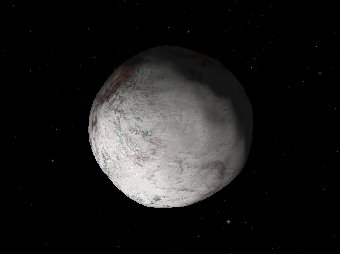BY LETTER
Centaurian Type Asteroid
A minor planet whose orbit around its parent sun lies typically between 5 and 30 AU, though it may extend inward almost as far as 1 AU or outward beyond 40 AU. The orbits of the Centaurs are dynamically unstable due to interactions with giant planets, so they must be objects in transition from a large, outer reservoir of small bodies, the Kuiper Belt, to potentially active, comet-like inner solar system objects. Known sizes range from a few tens to a few hundreds of kilometers across. Their composition is intermediate between that of comets and ordinary asteroids; indeed, the first object to be called a Centaur, Chiron of the Sol System, is often also classified as a comet following the discovery of a coma around it. Clearly, in many cases a cut-and-dry classification scheme is not always successful when confronted by some of the worlds that are to be found. Were any Centaur to be perturbed into an orbit that approaches its local sun, it would become a truly spectacular comet, many times brighter than any seen in historic times.
Related Articles
Appears in Topics
Development Notes
Text by John M. Dollan
Initially published on 24 September 2001.
Initially published on 24 September 2001.







